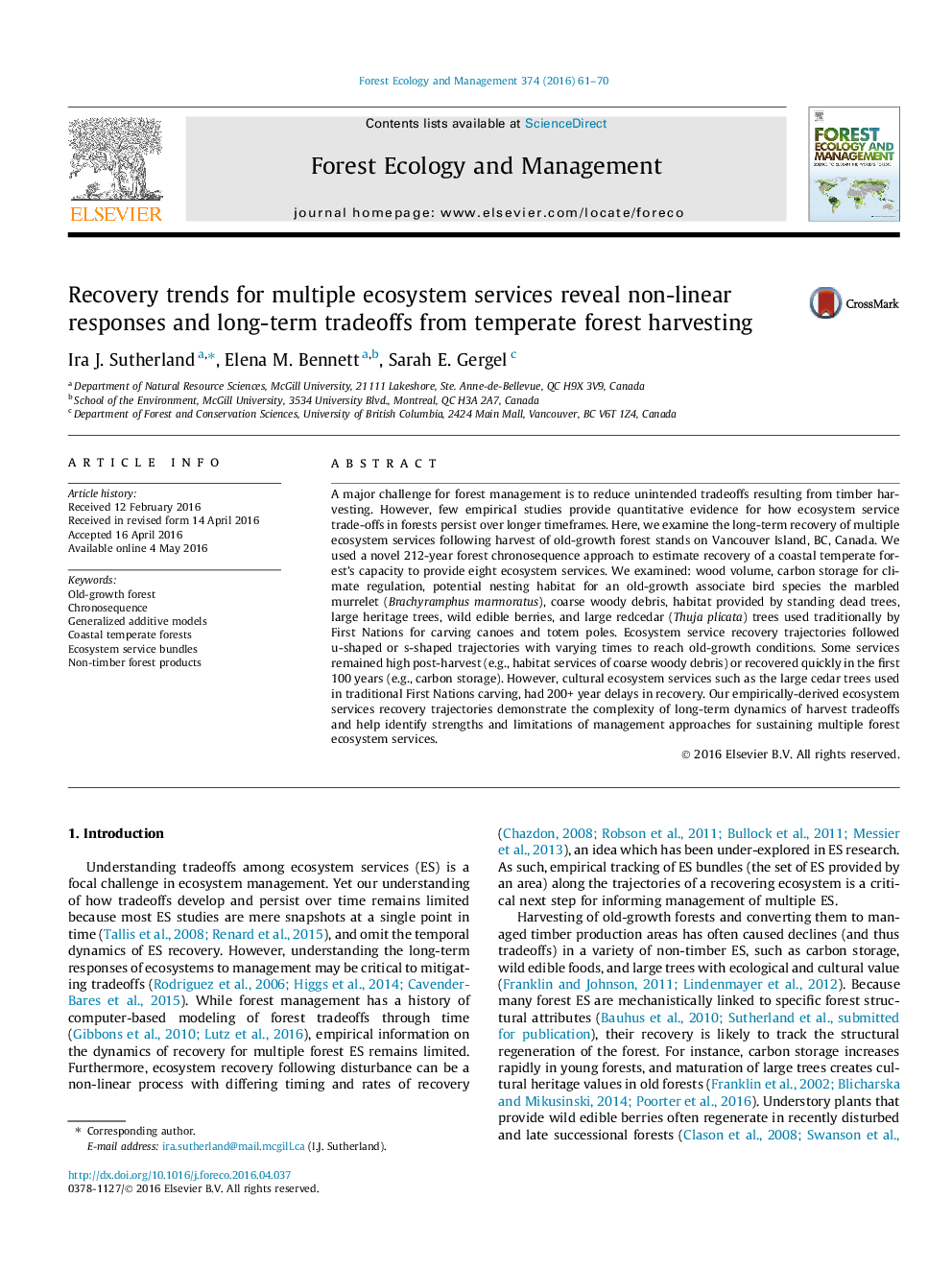| Article ID | Journal | Published Year | Pages | File Type |
|---|---|---|---|---|
| 85890 | Forest Ecology and Management | 2016 | 10 Pages |
•Harvesting old-growth caused persistent declines in eight ecosystem services (ES).•ES recovered along non-linear trajectories and at markedly different timeframes.•Declines in large cedar trees used in aboriginal carving persisted over 212 year.•Long timeframes of ES recovery emphasize a need for conserving remaining old-growth.
A major challenge for forest management is to reduce unintended tradeoffs resulting from timber harvesting. However, few empirical studies provide quantitative evidence for how ecosystem service trade-offs in forests persist over longer timeframes. Here, we examine the long-term recovery of multiple ecosystem services following harvest of old-growth forest stands on Vancouver Island, BC, Canada. We used a novel 212-year forest chronosequence approach to estimate recovery of a coastal temperate forest’s capacity to provide eight ecosystem services. We examined: wood volume, carbon storage for climate regulation, potential nesting habitat for an old-growth associate bird species the marbled murrelet (Brachyramphus marmoratus), coarse woody debris, habitat provided by standing dead trees, large heritage trees, wild edible berries, and large redcedar (Thuja plicata) trees used traditionally by First Nations for carving canoes and totem poles. Ecosystem service recovery trajectories followed u-shaped or s-shaped trajectories with varying times to reach old-growth conditions. Some services remained high post-harvest (e.g., habitat services of coarse woody debris) or recovered quickly in the first 100 years (e.g., carbon storage). However, cultural ecosystem services such as the large cedar trees used in traditional First Nations carving, had 200+ year delays in recovery. Our empirically-derived ecosystem services recovery trajectories demonstrate the complexity of long-term dynamics of harvest tradeoffs and help identify strengths and limitations of management approaches for sustaining multiple forest ecosystem services.
